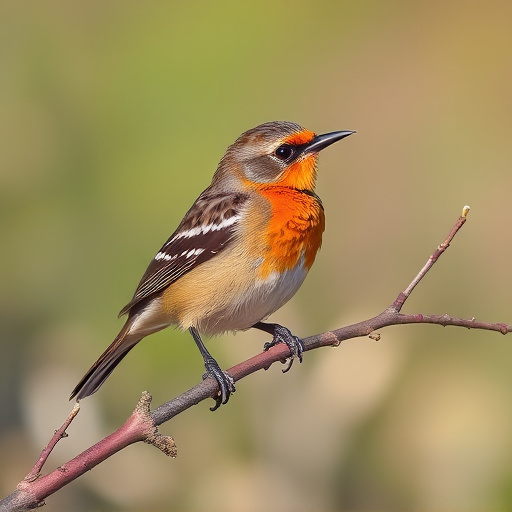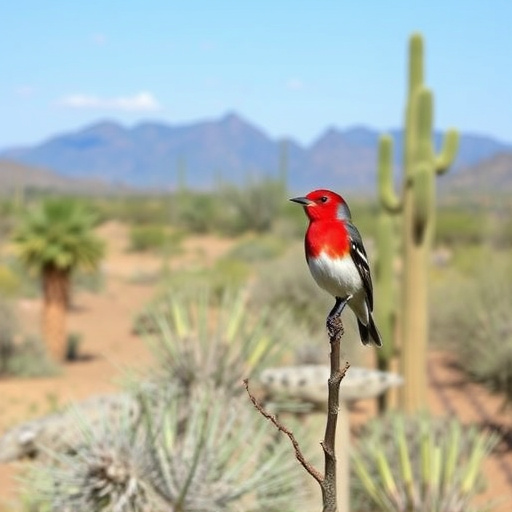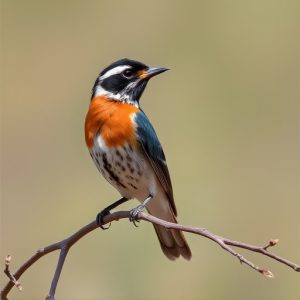Florida Canyon in southern Arizona is a top birding destination, especially for those seeking the Rufous-capped Warbler. The canyon's diverse terrain offers unique opportunities to observe this enchanting bird up close. Beyond birding, these trails contribute to local bird population studies and conservation efforts, attracting ornithologists and amateurs alike. Spring and early summer are prime times to explore the breeding patterns of species like the warblers, providing valuable insights into habitat preferences and ecological interactions. Strategic planning is essential for successful observations.
“Uncover the hidden gems of birding in southern Arizona with Florida Canyon trails, a haven for the elusive Rufous-capped Warbler. This article guides birders through the unique ecology and breeding patterns of this stunning region. Explore the best trails to discover nesting sites, learn expert strategies for maximizing your sightings, and immerse yourself in the vibrant tapestry of Southern Arizona’s natural wonders. Enhance your birding experience and witness the remarkable metamorphosis of these vibrant warblers.”
- Unveiling the Rufous-capped Warbler's Haven: A Birder's Guide to Florida Canyon
- The Unique Ecology of Southern Arizona's Canyon Trails
- Exploring Breeding Patterns and Hotspots: Strategies for Dedicated Birders
Unveiling the Rufous-capped Warbler's Haven: A Birder's Guide to Florida Canyon

Florida Canyon, nestled in the heart of southern Arizona, has long been a vibrant spot for birders seeking rare and beautiful species. Among its diverse avian residents, the Rufous-capped Warbler stands out as a true gem. This enchanting bird, with its distinctive rufous cap and melodious song, has captivated nature enthusiasts for years. Unveiling its breeding sites within the canyon is a rewarding experience that promises to enrich any birding trip.
For those interested in birdwatching in southern Arizona, Florida Canyon offers a unique opportunity to observe this species up close. The canyon’s diverse terrain, ranging from dense undergrowth to open areas, provides an ideal habitat for the Rufous-capped Warbler and its young. Birders can navigate these trails with care, keeping an eye out for telltale signs of their presence—a flash of vibrant color among the foliage or the sweet, varied notes of their song. This haven not only caters to enthusiasts but also contributes to our understanding of local bird populations and their conservation.
The Unique Ecology of Southern Arizona's Canyon Trails

Southern Arizona’s canyon trails are a haven for nature enthusiasts, particularly those interested in birding. These rugged landscapes boast diverse ecosystems that support an abundance of bird species, making them a top destination for ornithologists and amateur watchers alike. The region’s unique geography, characterized by deep canyons and varied microclimates, creates ideal habitats for many birds, including the elusive Rufous-capped Warbler.
The canyon trails offer a range of environments, from dense riparian areas to arid rocky slopes, each attracting different bird species. This diversity is particularly beneficial for birding in southern Arizona as it increases the chances of spotting various feathered friends. The trails also serve as vital breeding grounds and migratory pathways, making them crucial for studying and preserving the region’s rich avian biodiversity.
Exploring Breeding Patterns and Hotspots: Strategies for Dedicated Birders

Exploring the breeding patterns and hotspots of birds, especially those like the Rufous-capped Warbler, is a thrilling endeavor for dedicated birders in southern Arizona. The Florida Canyon trails offer an ideal setting to study these behaviors. During spring and early summer, bird enthusiasts can witness the establishment of nesting sites as warblers arrive to claim territories and mate. Observing their foraging patterns and choice of breeding grounds provides valuable insights into ecological interactions and habitat preferences.
Strategic planning is key for successful birding experiences in this region. Birders should aim to reach the canyons early, taking advantage of quieter morning hours when bird activity is at its peak. Patience and stealth are crucial skills to master, as these warblers are sensitive to disturbance. By quietly observing from a distance, birders can capture detailed views of the Rufous-capped Warbler’s vibrant plumage, behavior, and interactions with their environment, making it an unforgettable experience for any nature enthusiast engaging in birding in southern Arizona.
Birding enthusiasts in southern Arizona now have a valuable resource with the discovery of Florida Canyon trails as breeding sites for the Rufous-capped Warbler. By understanding the unique ecology and exploring these specific hotspots, dedicated birders can enhance their experiences and contribute to conservation efforts. Embracing these strategies opens up new avenues for discovering the rich avian tapestry that thrives in this vibrant region, making birding in southern Arizona an unforgettable symphony of nature.
